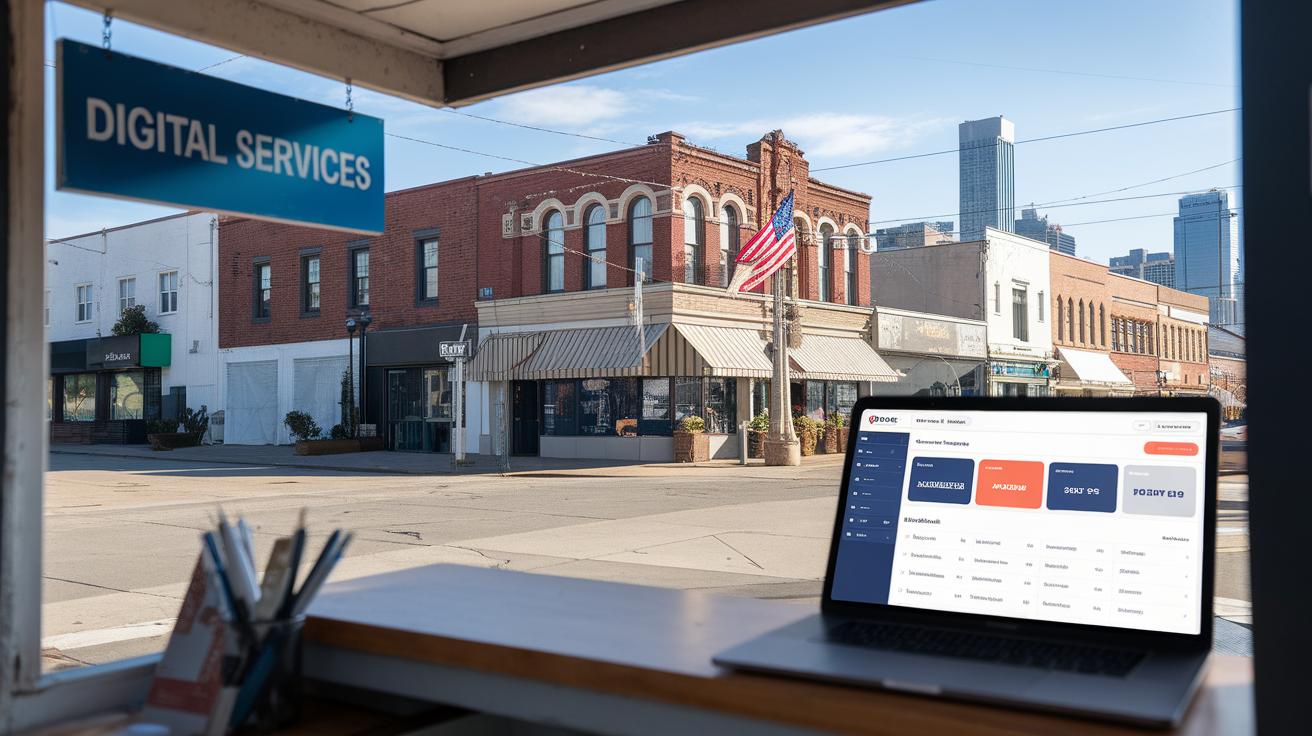Introduction
Pinterest has emerged as a powerful platform that combines social networking with visual discovery. With its unique focus on images, users can discover, gather, and share ideas through pinboards dedicated to their interests. From recipes to home decor, Pinterest helps users visualize their aspirations, making it particularly popular among brands looking to tap into consumer inspiration. Understanding how to effectively navigate and utilize Pinterest can maximize user engagement and transform a brand’s social media presence.
This article explores the winning strategies for maximizing engagement on Pinterest. By focusing on profile optimization, content creation, SEO practices, and analytics, brands can harness the power of Pinterest to not only showcase their products but also build lasting relationships with their audience. Let’s explore each key aspect to create a Pinterest strategy that drives meaningful engagement.
Understanding Pinterest and Its Unique Appeal
Pinterest stands out as a distinctive social media platform, primarily due to its unique focus on visual discovery. Unlike traditional social networks where interaction is mostly centered around personal updates or conversation, Pinterest offers a visual search engine experience that caters to users seeking inspiration for a myriad of interests such as fashion, home décor, recipes, and more.
People flock to Pinterest with the specific intention of exploring ideas and discovering new content. This visual-first approach means that users are often engaged and actively looking for solutions, turning this platform into a treasure trove of creative possibilities. The functionality of Pinterest allows users to create boards, categorize their interests, and share visual content, which enhances the art of storytelling through imagery.
The platform’s appeal for brands is equally noteworthy. By utilizing high-quality visuals and creative pin descriptions, brands can connect with an audience eager to discover new products and inspirations. Its search algorithm rewards visually appealing and relevant content, making Pinterest an essential channel for businesses aiming to generate engagement. When brands align their content with users’ interests and alter their pins to reflect current trends, they can significantly enhance their visibility.
Pinterest serves as a bridge between consumers and brands, with users often utilizing the platform as a planning tool for future purchases. It acts as a visual catalog where ideas are organized and saved for later consideration, making it an effective space for brands to showcase their offerings in a visually compelling manner. This symptom of “intent-driven” browsing implies that users are often in a purchasing mindset, positioning brands strategically to influence purchase decisions.
Pinterest’s demographics intersect a wide array of users, from millennials looking for lifestyle inspiration to older generations exploring DIY projects. This diverse user base offers brands the opportunity to connect with various segments effectively. The platform’s unique functionalities, including the use of rich pins, video pins, and promoted content, allow for innovative marketing strategies that encourage maximum consumer engagement.
The unique appeal of Pinterest lies in its ability to facilitate visual discovery, making it an attractive platform for both users seeking inspiration and brands looking to engage effectively with their audience in creative ways.
Crafting an Effective Pinterest Profile Winning Pinterest Strategy for Maximum Engagement
Creating a compelling Pinterest profile is paramount for engaging users and attracting followers. As a visual-centric platform, Pinterest warrants a profile that not only stands out aesthetically but also communicates your brand’s identity and purpose effectively. The fundamental components of a successful profile include a clear profile picture, an engaging bio, and well-structured boards.
Profile Picture and Business Name
The profile picture serves as the first impression users will have of your brand. It is advisable to use a recognizable logo or an image that embodies the essence of your business. Consistency in branding across social media channels is vital for building trust and recognition.
Your business name should include relevant keywords that reflect your niche, making it easier for potential followers to find you through Pinterest’s search feature. For example, if you specialize in home decor, a name like “Elegant Home Ideas” will attract users interested in that category.
Crafting an Engaging Bio
Your bio is a critical aspect of your profile and should communicate your brand’s mission concisely. Utilize this space to articulate what followers can expect when they engage with your content. Incorporating relevant keywords not only aids in searchability but also enhances your profile’s appeal.
- Highlight unique aspects of your brand.
- Use a tone that aligns with your brand image.
- Consider adding a call-to-action, encouraging users to visit your website.
Creating and Organizing Boards
The organization of your boards significantly impacts user experience. Boards should be categorized thoughtfully, allowing for easy navigation and a pleasing visual layout. Each board should represent a theme, making it clear to users what type of content they can expect to find.
Ensure that each board has an informative description infused with relevant keywords to increase discoverability. This strategy not only helps in attracting followers but also aligns with Pinterest’s search algorithms.
Incorporating rich pins, which allow for more context about an idea, can also significantly enhance engagement. These pins directly elevate your content’s appeal by presenting additional information and making user interaction seamless.
Investing time in optimizing your Pinterest profile will create a strong foundation for engagement and growth. A well-structured profile not only captivates potential followers but also invites them to explore your visual content, driving ongoing engagement and interaction. It sets the stage for your Pinterest success as you move toward creating compelling content that resonates with your audience.
Content Creation for Pinterest Success Winning Strategies for Maximum Engagement
Visual Quality: The Heart of Pinterest Engagement
Creating compelling content for Pinterest hinges significantly on the visual quality of the images and graphics you share. The Pinterest audience is primarily drawn to visually stimulating content, making it imperative to invest time in producing high-resolution images that resonate with your brand identity. Begin by ensuring that your images are well-lit, color-balanced, and sharp, capturing attention immediately in a crowded feed. Opt for vertical images, as they tend to perform better, following Pinterest’s preference for tall, eye-catching visuals.
Beyond mere aesthetics, storytelling plays a vital role in capturing the audience’s imagination and driving engagement. Each pin should tell a story—whether it’s showcasing a recipe, a DIY project, or a travel destination. Start by creating a narrative around your content that evokes emotion or inspires action. Utilize captions effectively to reinforce the storyline, incorporating meaningful context that connects with your audience’s interests and desires.
Strategic Pin Design and Layout
The way you design your pins can significantly impact user engagement levels. Incorporate text overlays to convey essential information quickly. Use clear, bold fonts against contrasting backgrounds to ensure readability. Consistency in style is key; establishing a recognizable color palette and font choice can help solidify your brand identity across the platform.
Utilize collage designs or infographics to deliver value through information, appealing to users looking to learn something new. By presenting data in a digestible format, you not only engage viewers visually but also encourage them to save and share your content, further amplifying its reach.
Utilizing Rich Pins for Enhanced Engagement
Implementing Rich Pins can provide a significant edge in your content strategy. These pins automatically include extra information directly from your website, making them more informative and engaging. For example, using Product Rich Pins can provide real-time pricing, availability, and product descriptions, making it easier for potential customers to take action. For recipe content, utilize Recipe Rich Pins to include cooking times and serving sizes, enhancing user experience and promoting click-through rates.
Successful content creation on Pinterest is about crafting visually captivating, narrative-driven materials that encourage interaction. By merging quality visuals with storytelling and strategic formats, brands can unlock the full potential of Pinterest for effective engagement and growth.
Understanding Pinterest SEO The Key to Maximizing Engagement
Emphasizing the Importance of SEO on Pinterest
In the expansive world of Pinterest, utilizing effective search engine optimization (SEO) is fundamental for driving traffic to your pins and enhancing engagement. Unlike traditional search engines, Pinterest operates as a visual discovery platform where users search for inspiration through images and visual content. Therefore, optimizing your Pinterest presence requires a tailored approach that aligns keyword strategies with captivating visuals. By strategically integrating keywords within your pin descriptions, board titles, and profile, you can significantly increase the visibility of your content.
The essence of Pinterest SEO lies in understanding how users interact with the platform. They typically input specific terms in the search bar, seeking ideas or solutions related to their interests. By identifying and incorporating these keywords into your content, you can effectively position your pins in front of users actively looking for similar content. Researching trending topics and popular keywords related to your niche will empower you to craft pin descriptions that naturally include these terms, leading to improved search ranking and user engagement.
Leveraging Keyword Usage Effectively
Effective keyword usage goes beyond merely including popular phrases; it’s about strategic placement and relevance. Here are some actionable tips to consider:
- Use Long-Tail Keywords: Instead of generic terms, focus on specific phrases that accurately describe your content. Long-tail keywords attract a more targeted audience, increasing the likelihood of engagement.
- Optimize Pin Descriptions: Create descriptive and engaging pin descriptions that weave in your relevant keywords. This not only aids in SEO but also captivates the interest of potential followers.
- Consistent Branding: Ensure that your keywords reflect your brand identity. Consistency across your pins and boards helps Pinterest recognize and categorize your content effectively.
Implementing these strategies fosters a deeper connection with your audience, encouraging them to interact with your content. As you align your visuals with well-researched keywords, you’ll notice an increase in repins, likes, and comments, creating a thriving environment for community engagement and discovery.
By focusing on Pinterest SEO, you establish a robust foundation for your overall Pinterest strategy, paving the way for future growth as you explore the power of boards and pins in your upcoming content strategy.
The Power of Pinterest Boards and Pins
Structuring Your Content Strategy on Pinterest
Pinterest operates as a visual discovery platform, and at the heart of its functionality are boards and pins. Understanding the roles these components play is crucial for creating an effective content strategy aimed at maximum engagement. Boards serve as thematic collections where users can organize and categorize their pins. Each board should represent a specific niche or theme that aligns with your brand’s identity or the interests of your target audience. This organization allows users to navigate your content easily, enhancing their experience and encouraging more engagement.
To craft an effective board strategy, begin by determining the primary categories you want to include. Consider the interests of your audience and what kind of content resonates with them. For instance, a food blogger might create boards for “Healthy Recipes,” “Desserts,” and “Cooking Tips.” Once you have your categories, ensure that your board titles are descriptive and keyword-rich to enhance discoverability. Using relevant keywords helps in SEO practices, enabling your boards to appear in search results, thus increasing visibility.
Collaboration can amplify the reach of your boards. Invite other users to contribute to select boards that align with their expertise. This collaborative strategy not only enriches the content but also engages a wider audience, as contributors will likely share the board with their followers. However, maintain a balance between collaboration and brand voice; ensure that all pins remain consistent with your brand’s image.
Tips for Effective Board Organization
Beyond simply creating themed boards, consider these practical tips for organization:
- Prioritize Quality Over Quantity: Focus on a few well-curated boards instead of many poorly maintained ones. It’s better to have ten high-quality boards than a hundred disorganized collections.
- Utilize Sectioned Boards: For broader topics, sectioned boards can allow for more granular organization. For example, within a “Travel” board, create sections for “Europe,” “Asia,” and “Local Tips.”
- Regularly Update Boards: Keep content fresh by regularly assessing what pins are performing well and what may need to be updated. Remove underperforming pins to keep boards engaging.
- Engage with Rich Pins: By using Rich Pins, you can provide more context about your content. These pins sync information from your website and can drive additional traffic to your site.
Leveraging the power of boards and pins through strategic organization can significantly enhance your presence on Pinterest. A well-structured content strategy ensures that users can easily discover and engage with your pins, thereby maximizing the platform’s potential for growth and interaction.
Utilizing Pinterest Analytics for Maximum Engagement
Pinterest Analytics is an invaluable tool for understanding how well your visual content resonates with your audience. By leveraging this platform, businesses can gain insights into user engagement metrics, audience demographics, and the overall performance of pins and boards. These analytics open the door to informed decisions and strategic adjustments necessary for maximizing engagement.
Understanding Audience Behavior
One of the first aspects to explore through Pinterest Analytics is audience behavior. Metrics such as impressions, clicks, and saves provide clarity on what types of content are most appealing. For instance, if a particular pin consistently garners more saves than others, it signals that this content aligns perfectly with audience interests. You can also assess audience demographics—age, gender, and location—which further aids in crafting tailored content that resonates on a more personal level.
Tracking Pin Performance
Monitoring individual pin performance is instrumental in refining your Pinterest strategy. The analytics dashboard allows you to see which pins are driving the most engagement. Look for trends in the types of images, colors, or themes that attract clicks and saves. Experimentation with different pin formats, such as infographics or videos, can help you identify what works best for your audience. This data-driven approach fosters a cycle of continuous improvement, ensuring that your content remains fresh and relevant.
Adjusting Strategy Based on Insights
Utilizing learned insights effectively means adjusting your Pinterest strategy regularly. If certain boards are underperforming, consider reorganizing or refreshing their content. You might opt to create new boards that align with trending topics or seasonal themes which can inspire new engagement. Additionally, regular monitoring encourages timely responses in content strategy, allowing you to capitalize on emerging trends and audience preferences in real-time.
Regularly revisiting Pinterest Analytics should be a fundamental practice. Establish a routine for reviewing key performance indicators (KPIs), such as engagement rate or conversion metrics, and use this information to inform both immediate actions and long-term strategy. By integrating insights from Pinterest Analytics into your broader marketing efforts, you will find that engagement grows organically as your content becomes more attuned to audience needs.
Integrating Pinterest into Your Overall Marketing Strategy
In today’s fast-paced digital environment, the integration of Pinterest into a broader marketing strategy is a vital step for brands aiming for maximum engagement. Pinterest serves as a powerful visual discovery platform, providing unique opportunities to enhance brand visibility and connect with potential customers. Establishing a cohesive branding approach across multiple platforms will ensure that content resonates with users and drives meaningful interactions.
Championing Cohesion Across Platforms
To successfully integrate Pinterest, brands must first assess their overall marketing strategy and identify touchpoints where visual content can enhance storytelling. Pinterest thrives on visual engagement, making it essential for businesses to maintain consistency in their branding elements—colors, fonts, imagery, and messaging—across all channels. For instance, a company may run campaigns on Facebook or Instagram; however, the visual presentations on Pinterest should honor the same aesthetic to maintain brand coherence. Customers recognize brands by their visual identity, and reinforcing this identity across platforms fosters trust and familiarity.
Content repurposing plays a significant role in this integration. Posts created for a blog or social media platform can be transformed into eye-catching Pins, utilizing stunning images or infographics. This strategy not only optimizes resources but also enhances reach. Creative adaptations allow brands to leverage existing content, redirecting audience traffic from Pinterest to blogs, websites, or other social media without losing brand integrity.
Engagement Strategies that Work
Another facet of successful Pinterest integration is understanding user intent and aligning it with marketing objectives. Users visit Pinterest often in the early stages of their buying journey, seeking inspiration and ideas. By tailoring content that meets these exploratory needs, brands can engage users more effectively. For instance, creating guides, checklists, or “how-to” Pins can entice users to save and share content, thus amplifying reach.
- Curated Boards: Develop boards that target specific themes or seasonal trends, providing a tailored experience for users.
- Collaborative Efforts: Partner with influencers or other brands to reach broader audiences and generate diverse content.
- Call-to-Actions: Incorporate strong calls-to-action in Pins, encouraging users to visit a website or follow social accounts for more insights.
Integrating Pinterest into your overarching marketing strategy can yield significant gains in engagement and brand loyalty. Each crafted Pin is not just a standalone visual; it’s part of a larger narrative intended to intrigue and connect with the audience. This holistic approach stands to not only enhance presence on Pinterest but also across the entire digital landscape.
Case Studies of Successful Pinterest Engagement Winning Pinterest Strategy for Maximum Engagement
Real-World Examples of Successful Brands
Analyzing effective Pinterest strategies can provide significant insights for brands looking to enhance engagement on this visual platform. A prime example is the home décor brand, Pinterest Home, which transformed its online presence through carefully curated Pinterest boards. By showcasing aesthetically appealing images and user-generated content, the brand experienced a 65% increase in engagement rates over the course of six months. This growth can be attributed to their strategy of leveraging seasonal content and interactive pins, which encouraged users to not only save but also share their creations.
Similarly, Sarah’s Baking, a small business focused on baking tutorials, utilized Pinterest to foster community engagement. By creating rich pins that included recipes and baking tips, the brand ensured that each image was not only visually appealing but also highly informative. The result was a doubling of their website traffic directly from Pinterest. Sarah’s Baking positioned itself as a go-to source for baking knowledge by engaging users with polls and questions about their favorite recipes, fostering a sense of involvement among the community.
Lessons Learned from Their Strategies
These successful brands highlighted several actionable strategies for maximum engagement on Pinterest. Firstly, a cohesive visual identity is key. By maintaining consistent branding across boards and pins, brands can create a recognizable presence that resonates with their target audience. It’s crucial to use high-quality images that reflect not only the product but also the lifestyle associated with it.
Regular pinning is important. Establishing a consistent posting schedule can keep the brand visible in user feeds, ensuring that content reaches the intended audience at optimal times. Additionally, utilizing Pinterest’s features, such as Idea Pins, can enhance engagement by offering followers interactive content that drives participation.
Engaging with followers directly through comments and repinning user-generated content helps to build a community. By encouraging users to share their own interpretations of products or tutorials, brands can generate organic engagement and strengthen their relationship with their audience. Each of these strategies culminates in a well-rounded approach that can enhance a brand’s effectiveness on Pinterest, unlocking its potential for significant engagement growth.
Conclusions
A well-crafted Pinterest strategy is crucial for brands aiming to leverage the platform’s visual-centric approach to engage users effectively. The focus on high-quality imagery, strategic board organization, and keyword optimization can lead to increased brand visibility while encouraging users to explore and save content. Utilizing Pinterest’s analytics allows for continued refinement and improvement of engagement strategies.
Incorporating Pinterest into a broader marketing plan enhances overall social media engagement and establishes a brand’s online authority. By continuously adapting to trends and insights, businesses can foster a community around their visual identity, leading to sustained growth and customer relationships.



















